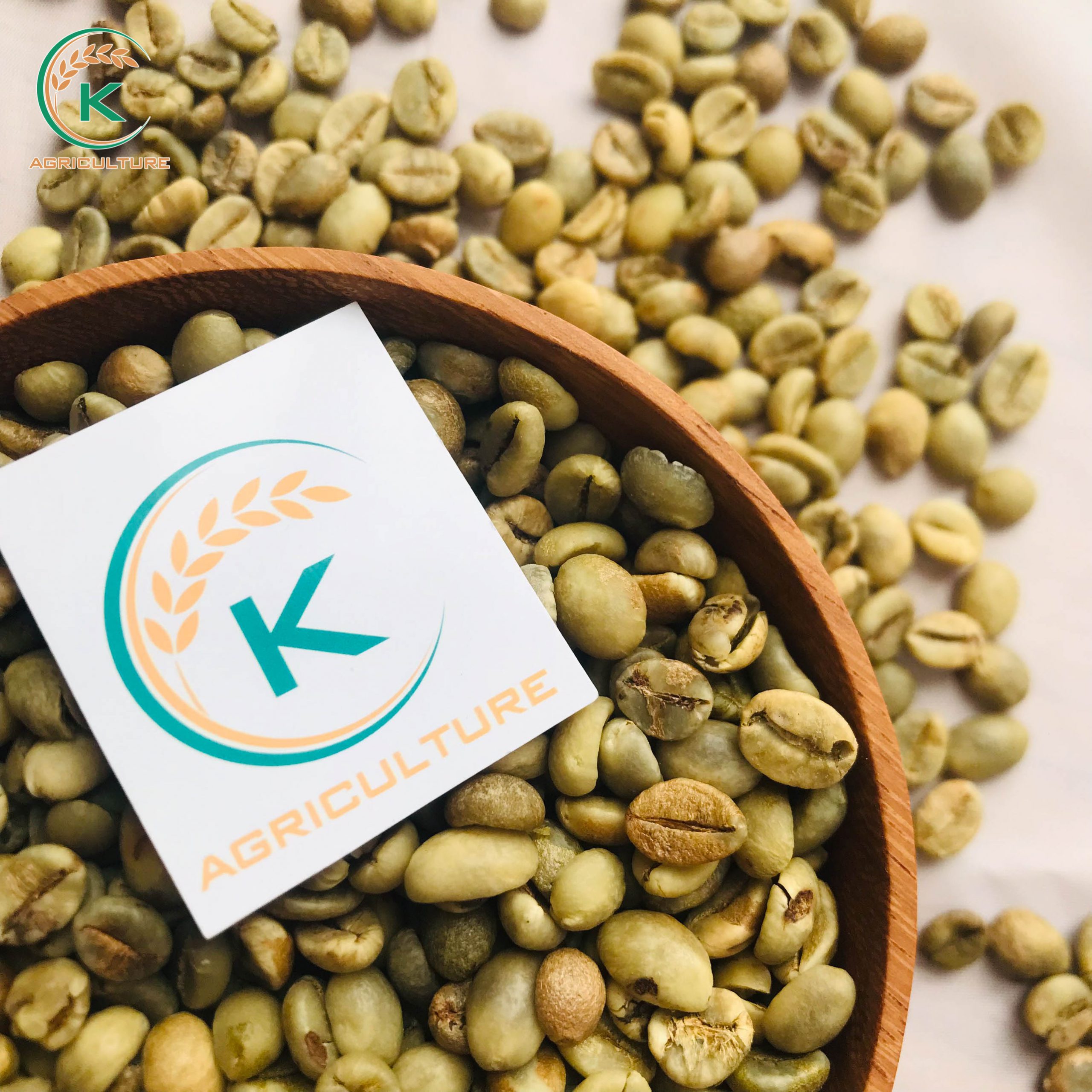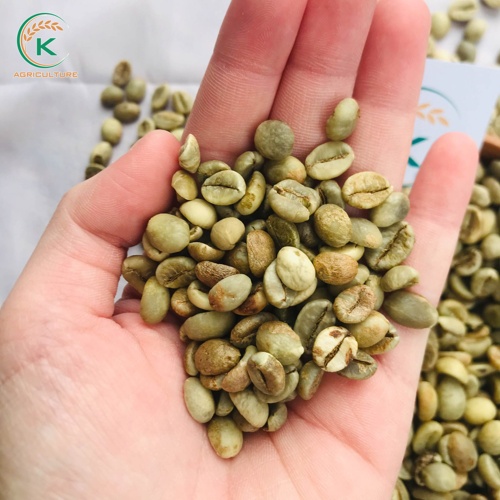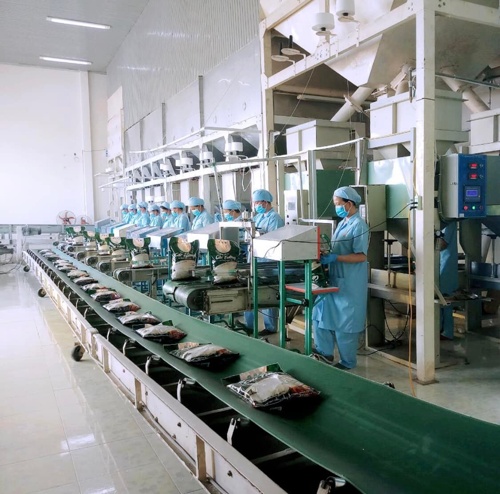
ROBUSTA GREEN COFFEE WET POLISHED - COMMERCIAL
Our Robusta green coffee bean wet polished is derived from Dong Nai, Vietnam – a tropical monsoon environment with high temperature, plentiful sunlight, and high moisture. Thus, Dong Nai has around 5,000ha of coffee-producing land at an elevation of 350-500m above sea level. This is why we picked Dong Nai as a growing location: to provide our consumers with the highest-grade Robusta green coffee bean wet polished

Specification
|
Product name |
Vietnam Robusta Green Coffee Bean (Wet polished S16/S18) - Commercial grade |
|
Moisture |
12,5% max |
|
Foreign matter |
0.1% max |
|
Black bean |
0.1% max |
|
Broken bean |
0.4% max |
|
Screen size |
16/18 |
|
Method |
wet polished/washed |
|
Package |
60kg jute bag |
|
Container capacity |
Container 20ft: 19MT Container 40ft: 27MT |
|
Payment term |
T/T or L/C at sight 100% |
|
Port of loading |
Ho Chi Minh port |

Characteristics of Robusta Green bean coffee Wet polished
The basic objective of the Wet polished method is to remove the whole outer layer of the Robusta coffee bean before drying it. This reduces the risk of contamination during the drying process, resulting in higher-value coffee beans. This procedure, however, is frequently expensive.
The taste of Robusta green coffee bean wet polished have more acidity, sweetness, depth, which is regarded as a cleaner cup when compared to other processing methods

How the Robusta Green bean coffee Wet polished is produced?
Step 1: Sorting
Coffee beans will be placed in a huge water tank to remove impurities such as stems, coffee leaves, and soil-mixed muck.
To eliminate green berries or light contaminants, we place the coffee in metal sieves, discharge the water, and place it in a siphon.
Step 2: Pulping
We place the coffee beans in a depulper, where the coffee cherries will come into contact with the rotating cylinder. Each cherry’s outer peel (and some of its mucilage) is immediately detached, leaving the bean remaining encased in mucilage. To avoid fermentation impacting the taste, this step must be completed fast. Before being transported to the aqueducts, the coffee beans must be removed from their outer peel.
Step 3: Fermentation
This stage is divided into two parts: biological fermentation and machine oiling. Biological fermentation can take place in a siphon, tanks, with or without microorganisms, whilst machine oiling can take place in washing troughs or viscous mixers.
Step 4: Drying
The coffee is washed after fermentation to eliminate contaminants from the beans. The seeds are then dried in the sunshine. To promote a gradual and consistent drying process, avoid fermentation, and avoid getting soaked by rain or invading germs, the coffee should be piled from 2 to 10 cm and turned periodically with a big rake.
Alternatively, we may lower the moisture content of the seeds by machine to 10% – 12%. Machine-dried coffee is devalued in comparison to sun-dried coffee, and even ground-dried coffee dries too rapidly, resulting in coffee of lower quality.
Robusta green bean coffee are now known as parchment coffee after drying and will be packed for preservation or processed further in the refining process.
Certificate
Many reputable certifications have been granted to our Robusta Green coffee beans, including Vietpresso 2019, ISO 9001:2015, HACCP, Global Gap, etc
We are an origin factory for RICE, COFFEE, and SPICES with close progress from farm to store. K-Agriculture’s motto is “Quality is King”. We do the best or nothing. With a 25-year history of delivering Vietnamese agricultural products to the world, we are honored to have you as a part of our success.

Create a free Listing to introduce your business and be visible to your potential customers
_________________________________
YELLOW PAGES CONTACT
+84 24.3636.9512 (Ext 312)
Hotline/ Zalo: +84 914 261 828 (Ms Amy)
